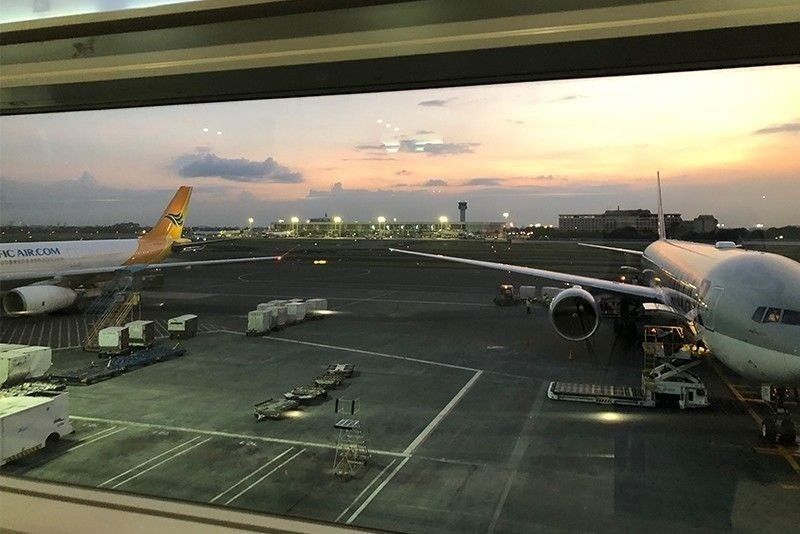Recovery of AsPac airlines threatened by Omicron

MANILA, Philippines — Further adjustments in border restrictions due to the emergence of the new COVID-19 variant is once again threatening the recovery of airlines in Asia-Pacific, according to aviation think tank CAPA-Center for Aviation.
In a report, CAPA said Asia-Pacific airlines have not yet had to make mass route cuts in response to the growing list of Omicron responses, with many planned re-openings of international routes still on track.
However, it said several of the region’s carriers have stressed that they are closely monitoring the situation to see if changes are needed.
CAPA said recent experiences with the Delta variant demonstrated what sort of damage a new variant could cause to a country’s population and travel industry.
“The emergence of the Omicron variant of COVID-19 has caused many Asia-Pacific countries to adjust their border settings, and if they go further down this path in coming weeks it could derail promising signs of recovery in the airline and travel industries,” CAPA said.
While there is still lack of hard evidence regarding the nature of the Omicron variant and how serious the threat is, CAPA said this has not stopped countries from taking preemptive steps to prevent its spread until more is known about the new variant.
“So far the most common action by Asia-Pacific governments has been to restrict travel from a limited number of southern African nations where most of the early Omicron cases were identified. As more cases popped up in countries outside Africa, many governments have added them to the high-risk list. However, there are often significant differences in the composition of these lists,” it said.
“Another step being taken by multiple countries has been to put a pause on planned border reopening measures. There are also many examples of increases in testing and entry requirements. So far at least, there are relatively few instances of the region’s governments imposing more sweeping measures applied to all international arrivals,” CAPA said.
The aviation think tank pointed out that the Omicron wave is once again illustrating the problem of different countries taking widely varying actions.
This patchwork of requirements and restrictions risks creating confusion for travelers and airlines, it said.
CAPA said the wide differences in response by various governments in Asia-Pacific to the threat of the new variant show there is still little uniformity in how countries assess and address risk.
“And even within countries there are often differences in approach between state and central governments, and between different states. All of this creates a confounding jigsaw of restrictions and requirements that in itself discourages travel. It takes the emergence of a new threat to highlight that this problem still exists to largely the same degree as when the COVID-19 pandemic began,” it said.
“The problem is compounded by the technicalities of different limbs of government being involved in key decisions, with health and immigration authorities overlaid by the politics of national economics. It is understandable that different states have varying approaches – but that is no excuse for the abject failure to establish channels for conferring with partners and coordinating approaches as new events predictably occur,” CAPA said.
Although international air passenger demand remained significantly depressed, the Association of Asia-Pacific Airlines reported that the number of international passengers who travelled on the region’s carriers in October went up by 24 percent year-on-year in October to 1.2 million as governments gradually reopened borders.
But with the recent emergence of the Omicron variant, International Air Transport Association director general Willie Walsh has said that travel restrictions are not a long-term solution to control COVID variants.
“Governments are responding to the risks of the new coronavirus variant in emergency mode causing fear among the traveling public. As quickly as possible we must use the experience of the last two years to move to a coordinated data-driven approach that finds safe alternatives to border closures and quarantine,” Walsh said.
The Philippines’ pandemic task force for its part has already stepped up measures to prevent the entry of the Omicron variant into the country, enforcing updated testing and quarantine protocols for arriving passengers from areas not covered by the travel ban beginning last Friday.
Officials from the Philippine carriers, meanwhile, told The STAR that they are still on a wait and see mode on further developments involving the emergence of the new COVID-19 variant as well as on border policies.
Prior to the emergence of Omicron, local carriers such AirAsia Philippines and Cebu Pacific have expressed cautious optimism on their growth and recovery given the vaccination developments in the country alongside the easing of restrictions.
- Latest
- Trending
































